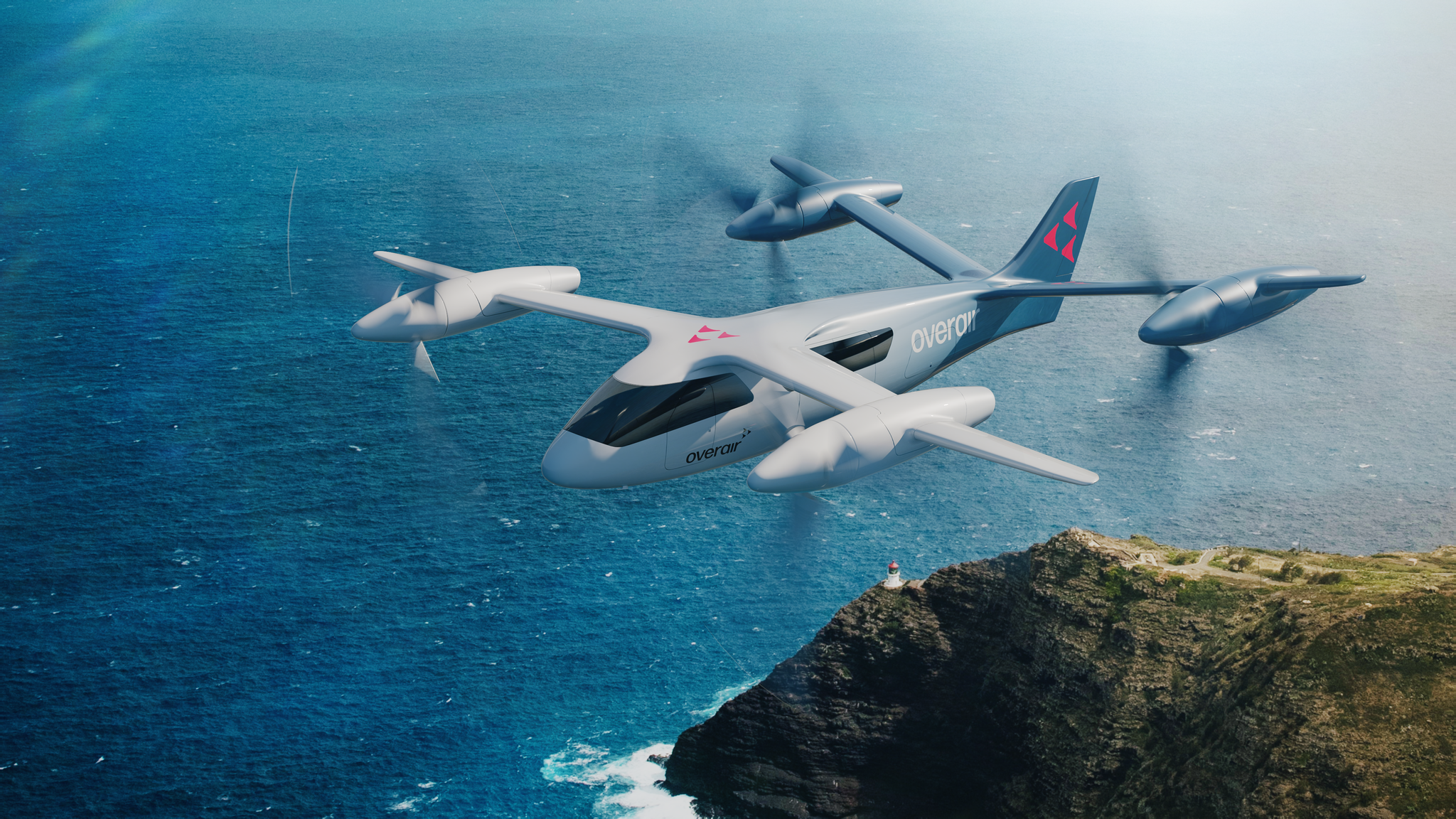
Overair’s Butterfly is a quad-tiltrotor electric air taxi designed to carry five passengers and a pilot.
Credit: Overair
During his latest visit to the U.S. earlier in January, Won Hee-ryong, South Korea’s minister of land, infrastructure and transportation (MOLIT), made a surprise stop at the Santa Ana, California-based headquarters of electric vertical takeoff and landing vehicle (eVTOL) startup Overair, the company’s CEO told Aviation Week.
The visit took place during a trip organized by the MOLIT to meet with U.S. Transportation Secretary Pete Buttigieg. It was also attended by around 30 Korean officials including members of the Korean National Assembly, the Korean Aerospace Research Institute and the Korean Institute for Aviation Safety Technology, Overair CEO Ben Tigner said.
Tigner said the trip’s impetus was Overair’s close relationship with South Korea’s Hanwha Group conglomerate, which has invested a total of $170 million in the startup to help it develop and certify the Butterfly, its piloted, five-passenger quad-tiltrotor electric air taxi.
“That was a great visit that was really all about relationship building,” Tigner says. “The minister recognized that we have a great partnership with Hanwha, and we have the potential to do even more collaboration with the supply base, operators and other constituents across Korea, and so he wanted to understand more about us and help encourage that relationship.”
In addition to collaborating with Korean entities, Tigner also identified Korea as one of Overair’s potential target markets, observing the need in many of the country’s wealthy but congested cities for innovative urban air mobility (UAM) solutions like the Butterfly.
“Take Seoul, which is kind of a classic example where there’s congestion and it’s hard to get around town,” Tigner says. “If you have a mechanism for being able to get from here to there–20, 30, 40, 50 miles away–there’s a lot of things they could do more efficiently than they can do today.”
Overair is currently in the process of assembling its first full-scale uncrewed prototype, with the vehicle’s rotors and most of the large structural parts already in existence, Tigner says. He added that he expects to have the aircraft fully assembled by year’s end, with a first flight “shortly thereafter.”
The company has already concluded testing of its propulsion system, which took place in the Mojave desert using a truck testbed that carried the full-scale system, including the 20-ft.-dia. propellers, which are very large relative to most other eVTOL designs.
“With larger propellers, that allows you to push more air while turning the propellers slower, so you can generate more thrust using less power and making less noise,” Tigner explained. “But it takes more sophisticated technology to be able to do that, and that’s what we have by virtue of being a spinoff from Karem Aircraft.”
Fully testing the propulsion system prior to development of the prototype aircraft also allows Overair additional time to understand the FAA’s certification rules for eVTOLs, which Tigner said should ultimately reduce the number of iterations and design changes to the vehicle.
“We wanted to focus on getting the ground rules established and understood between us and the FAA before we really started engineering the vehicle in detail,” Tigner says. “That approach leads to a smaller number of iterations where we have to build hardware, test it, figure out the flaws and then re-engineer it under a new set of certification rules.”
While Tigner does not expect Overair to be first in the eVTOL certification race, he said he thinks the company will probably be among the “first wave” of companies to achieve certification in 2025-2026.





